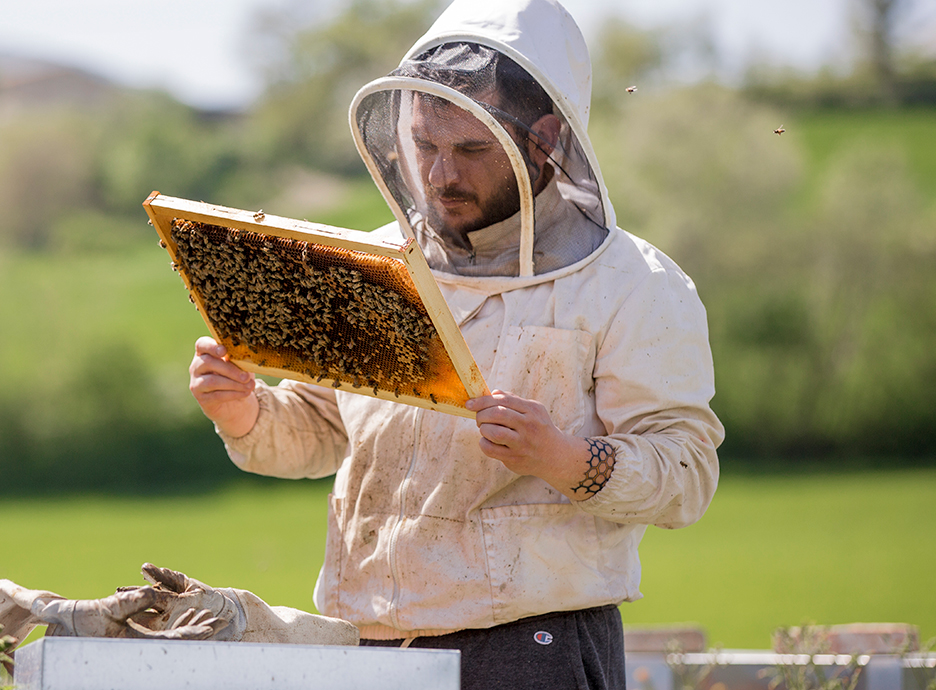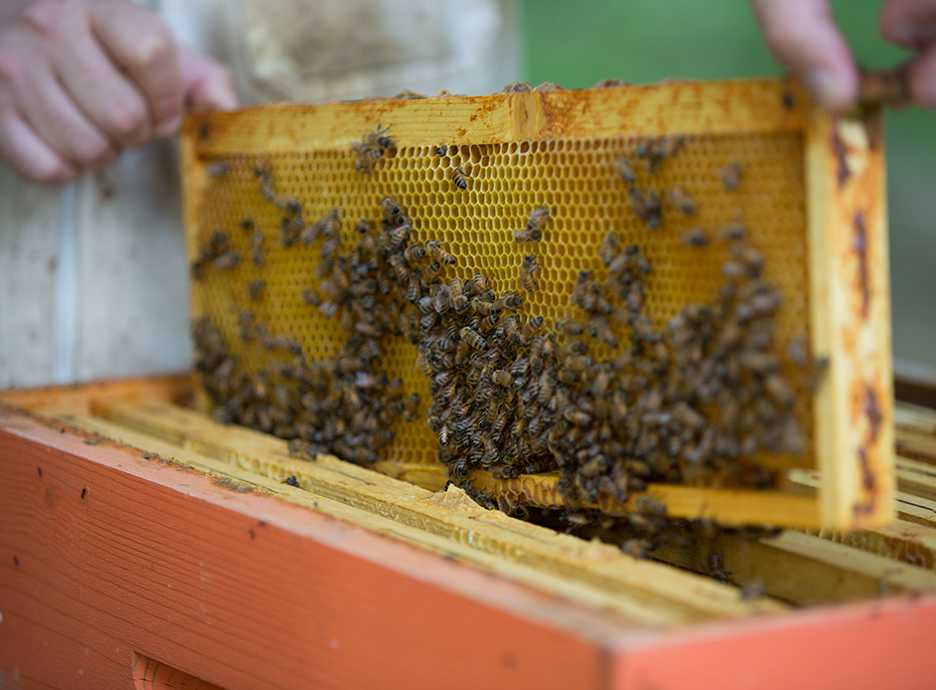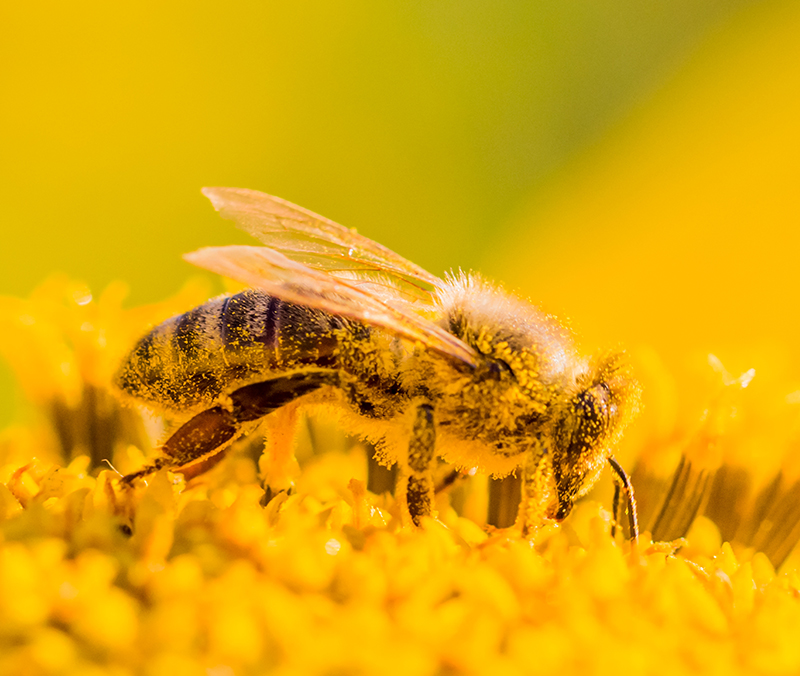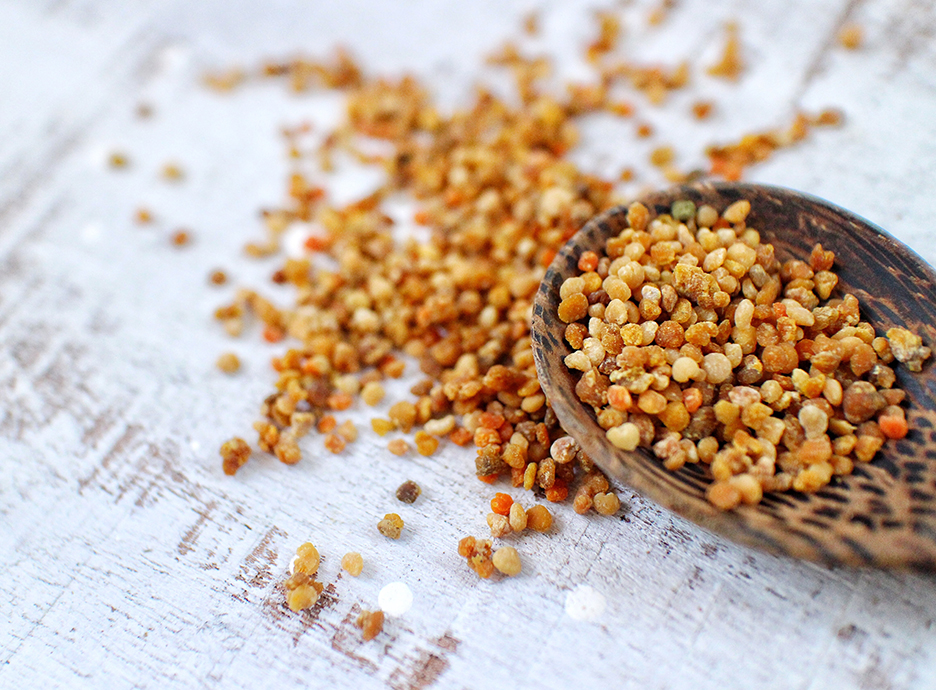Data
sheet
Country of origin
Italy
Harvest area
The Umbrian-Marches Apennines Mountains (peaks between 750 and 1200 m).
Product description
Resinous exudate harvest by bees from the stems of various tree plants, mixed with wax and salivary enzymes to become an insulating and disinfectant material inside the hive. It has a typical balsamic-spicy aroma, a rather bitter taste (concentration in propolis is 40% minimum).
Origin
Leaf buds and tree bark cervices of Populus nigra - alba (poplars) and Cupressus sempervirens (cypresses); possible derivation also from alders, elms, birches, willows.
Production method:
Placing a fenestrated "false ceiling" in the beehive which, due to its irregularities, leads the bees to harvest resin in order to seal it. The net is then removed and the raw propolis is harvested from it, which is left to soften in cold and dark 65% organic ethyl alcohol solution for 20 days, thus obtaining the mother tincture.
Active
ingredients
Each bottle of propolis contains approximately 80-100 different compounds.
A pool of antioxidants occupies up to 70% of the product, being found in the balsamic resin and the proportion of essential oil; this also includes the volatile compounds that give propolis its typical balsamic-spicy aroma. They include an incredible amount of phenolic compounds (pinocembrine, galangin, naringenin, chrysine, etc.), phenolic and aromatic acids (including mainly p-coumarinic acid, ferulic acid, caffeic acid, etc.) and their derivatives. There are also sesquiterpenes (alcohol) such as β-eudesmol, cadinenes (α, γ, δ, τ), α-muurolene and others.
Micronutrients:
They are present due to the pollen quota (5%), mineral salts (at least 35: magnesium, calcium, potassium, sodium, copper, zinc, iron, manganese, etc.) and vitamins (B1, B2, B3, B5, B6, C, and E).
Other organic compounds
(5%) are represented by proteins, ketones and aromatic aldehydes, tannins, plant steroids, stilbenes (e.g.: resveratrol), polysaccharides and also enzymes (β-glucosidase, succinic dehydrogenase, glucoso-6-phosphatase, adenosine triphosphatase, acid phosphatase).
Chemical-physical characteristics:
Alcohol content at 20°C: 65% V/v
Density at 20 °C: 0.920 ± 0.030 gr/mL
pH = 5,0 ± 1
Microbial level < 100 UFC/gr
Nutraceutical
Properties
Anti-inflammatory effect
comparable to flurbiprofen.
Restorative effect
(stimulus to collagen synthesis):
treatment of stomach ulcers, acne vulgaris and the healing of burns and wounds, with a power comparable to that of silver sulfadiazine.
Oral hygiene:
It prevents the formation of plaque and the onset of periodontitis, with a less toxic action on the gums than products containing chlorhexidine.
Personal care:
Helps prevent and moderate symptoms caused by chronic vaginal infections.
Contraindications
People allergic to bee venom, suffering from asthma or with a high allergy incidence (especially hay allergy to Graminaceae, Cupressaceae, Betulaceae, Salicaceae, Fagaceae, etc.) should avoid the intake of hive products.
It is advisable to undergo allergy tests before starting therapy. Particular caution is required for pregnant women, lactating women and especially children of pediatric age, for whom propolis may contribute to allergic sensitivity.
Recommendations
for use
Just as all hive products, its effect is dependent on the dose.
Drops of the product can be used in many contexts, given the wide range of applications: 20-30 drops dissolved in a glass of water to gargle during sore throat and flu stages, as mouthwash (in case of gingivitis, periodontitis or dentinal sensitivity) or even for disinfection of toothbrushes. The same solution can be applied for brushing on acne rashes or boils to aid disinfection and skin repair process. 5% propolis in the intimate cleanser can be used for daily intimate hygiene.
A maximum oral intake of 3 mL per day (approx. 120 drops) is recommended.
Storage
method
Store at room temperature away from direct sunlight.
Expiry date
3 years
Packaging
Dark glass bottle with dropper.
Net weight
10mL
Certification
MiPAAF certified organic product, Inspected operator no. 44913.









